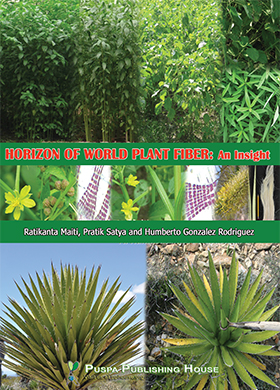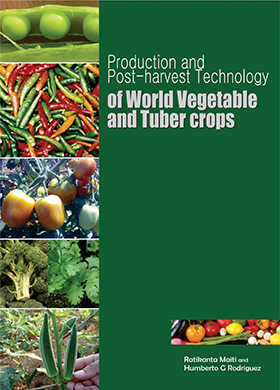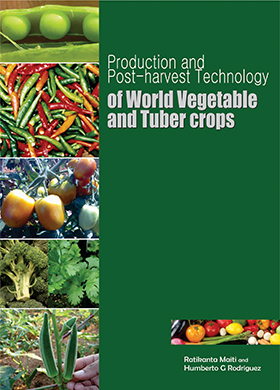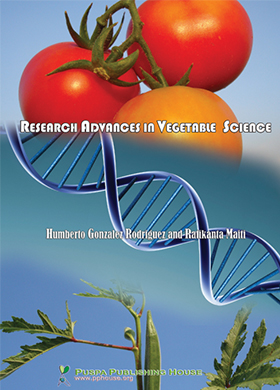Popular Article
Point and Band Placement of Fertilizers for Higher Productivity and Profitability
Prakash Sonnad, Teekam Singh and Tanmay Das
- Page No: 001 - 004
- Published online: 04 Mar 2023
-
Abstract
teekam.singh@icar.gov.in
Plants need minerals and nutrients for growth and development. They have to be applied to the crops at right time, right place, right rate and right sources (4Rs). To fulfil these ‘4R’ nutrient management stewardship, point and band placement of fertilizers are the best methods of fertilizer application to achieve higher productivity, profitability and nutrient use efficiencies. These are the potential techniques of fertilizer application over broadcasting of fertilizers in cereal crops like maize, rice and wheat. These simple techniques consume less fertilizers but give higher yield. Further, less weed infestation and loss of nutrients through volatilization, leaching and denitrification and fixation are additional advantages with point and band placement methods over broadcasting of fertilizers.
Keywords : Band placement, point placement, productivity and profitability
-
Introduction
According to Arnon and Stout, the criteria of essentiality of mineral nutrients for the plants stated that a) plants can’t complete life cycle in the absence of any of these mineral nutrients, b) the deficiency of an element can be rectified by substituting that particular nutrient only, c) these mineral elements are directly involved in the metabolism of plant. Nutrients have to be applied according to ‘4R’ Principles, which stand for right sources, right rate, right time and right place, for boosting nutrient use efficiency, production and productivity of a particular crop. Fertilizers have played a crucial role in the success of India’s green revolution and subsequent self-reliance in food-grain production. Fertilizer consumption in India increased from 16.6 kg ha-1 in 1971 to 209.4 kg ha-1 in 2020 and is increasing at an average annual growth rate of 5.70% (GOI, 2022). However, nutrient use efficiency did not increase much. The NPK use efficiencies are low i.e., 33, 16 and 19%, respectively (Table 1). There is an urgent need to improve nutrient use efficiency to reduce cost of production as well as greenhouse gas emissions. There are many techniques to apply fertilizers like broadcasting on the soil surface before ploughing, broadcasting on the soil surface after ploughing and mixing with the surface soil by harrowing, applying fertilizers in a band at the bottom of the plough furrow, applying fertilizers in bands, ≥5 centimetres away from the row and depth, combination of broadcasting methods or plough furrow application with bands at the side of the row to planting time and applying fertilizer with a drill below the surface of the soil before crop is planted.
-
Need of Precise Nutrient Placement
• Increasing the nutrient use efficiency
• To make the crop plants absorb sufficient nutrients for their optimum growth and development which ultimately lead to higher yield
• Saving of nutrient fertilizers which leads to lower cost of production
• Optimum doses of fertilizers as per crop needs lead to lesser emission of greenhouse gases
-
Point and Band Placement of Fertilizers
Placement of fertilizers near the plant either in a hole or in a depression followed by closing or covering with soil is known as point and band placement of fertilizers (Figure 1 and 2).
Urea point-placed in the root-zone can increase nitrogen use efficiency greatly through decrease in ammonia volatilization and denitrification and denitrification. Both point and band placement maintain optimum nitrogen (N) concentration in the root-zone. Phosphorous (P) is less mobile in soil and more chances for fixation and less available to plants when the P was broadcasted. Point or band placement of P fertilizers near to the plant roots make it easily available to the roots and increase P as well as other nutrients use efficiencies.
-
Effect of Point/Band Placement of Fertilizers on Plant Growth
Fertilizers applied with the point placement is directly available to root zone and there is hardly any loss of nutrients through volatilization and denitrification process. By feeding the roots in multiple bands, nutrients are more available to a larger number of roots and those roots will proliferate more in multiple areas. Point placement of N-fertilizers near the root zone represents an effective approach for enhancing N use efficiency (Bowen et al., 2004). Compared to split application of N, point placement promoted plant growth and nutrient uptake by inducing root proliferation of rice, especially point placement of N + P, and a shorter distance would increase rice growth and nutrient uptake. The difference between the N + P and N point placements was greater when close to the plant than when far from the plant (Fengqin et al., 2018). Therefore, higher specific root length around the placement site is essential for improving nutrient uptake which results in grain yield and simultaneous point placement of N and P also has a synergistic effect on rice growth.
-
Effect of Point/Band Placement f Fertilizers on Yield Attributes
Point or band placement of fertilizers look like ready to serve food for plants and thus has the highest nutrient use efficiency and yield. Band placement is preferable method for fertilizer P application to improve PUE which results in higher yield attributes and productivity of wheat check with data and revise the statement as compared to broadcasting of fertilizers (Table 2). Similarly in maize, grain yield was higher under banded fertilizer placement compared to broadcast of fertilizers (Table 4) (Mashingaidze et al., 2010).
-
Effect of Point/Band Placement of Fertilizers on Productivity
Mainly in this technique when the fertilizers are placed, they are less exposed to soil which results in reduced fixation of nutrients as compared to the broadcasting of fertilizers. The highest grain, stover and biological yield of maize were obtained with sub surface band placement than the surface band placement of fertilizers (Table 3) (Nayak et al., 2022).
-
Effect of Point/Band Placement of Fertilizers on Fertilizer Use Efficiency
Majorly fertilizer use efficiency of nutrients is very low i.e., N: 33%, P: 16% and K: 19%. Broadcasting of fertilizers increase more wasting of fertilizers and also increase incidence of pests due to high succulent leaves. Point and band placement of fertilizers right amount of nutrients at right place give balanced fertilization to the plants and subsequently results in higher productivity and profitability as compared to traditional way of fertilizers use which helped in increasing fertilizer use efficiency. Banding of fertilizers consistently attained the highest maize grain yield, followed by spot placement and broadcasting (Table 4). Early maize growth and grain yield data suggested that spot placement may reduce the yield response of the maize to fertilizer in water limited environments by predisposing maize plants to higher levels of moisture stress, when compared to banding. Spot and band placement increased radiation interception and early growth of maize and reduced the emergence, growth and seed production of weeds, compared to broadcasting (Mashingaidze et al., 2010).
-
Effect of Point/Band Placement of Fertilizers on Profitability
In field conditions, recommended dose of fertilizers with broadcasting method, plants are unable to utilize whole fertilizers so merely wastage of costly fertilizers while in point/band placement of fertilizers lower than recommended dose of fertilizers are used which reduce cost of cultivation and results in higher B:C ratio and net returns with point/band placement of fertilizers. The highest cost of cultivation, net return and B:C ratio obtained in sub surface band placement than the surface band placement of fertilizers (Table 5) (Nayak et al., 2022).
-
Conclusion
Contemplating all negative effects of broadcasting method of fertilizers, point/band placement of fertilizers is very important and resource saving techniques for enhancing productivity and profitability of field crops. Right placement of fertilizers increased chances of taken up by plants and reduced their wastage in the form of leaching and denitrification.
Figure 1: Manual dibbler for point placement of fertilizers
Figure 2: Band placement of fertilizers through manual plough
Table 2: Effect of methods of P application on yield attributes and productivity of wheat
Table 3: Effect of sub-surface and surface band/point placement of fertilizers on productivity of maize
Table 4: Effect of band and point placement of fertilizers on maize productivity (t ha-1)
Table 5: Effect of sub-surface and surface band/point placement of fertilizers on profitability of maize production
Figure 1: Manual dibbler for point placement of fertilizers
Figure 2: Band placement of fertilizers through manual plough
Table 2: Effect of methods of P application on yield attributes and productivity of wheat
Table 3: Effect of sub-surface and surface band/point placement of fertilizers on productivity of maize
Table 4: Effect of band and point placement of fertilizers on maize productivity (t ha-1)
Table 5: Effect of sub-surface and surface band/point placement of fertilizers on profitability of maize production
Figure 1: Manual dibbler for point placement of fertilizers
Figure 2: Band placement of fertilizers through manual plough
Table 2: Effect of methods of P application on yield attributes and productivity of wheat
Table 3: Effect of sub-surface and surface band/point placement of fertilizers on productivity of maize
Table 4: Effect of band and point placement of fertilizers on maize productivity (t ha-1)
Table 5: Effect of sub-surface and surface band/point placement of fertilizers on profitability of maize production
Figure 1: Manual dibbler for point placement of fertilizers
Figure 2: Band placement of fertilizers through manual plough
Table 2: Effect of methods of P application on yield attributes and productivity of wheat
Table 3: Effect of sub-surface and surface band/point placement of fertilizers on productivity of maize
Table 4: Effect of band and point placement of fertilizers on maize productivity (t ha-1)
Table 5: Effect of sub-surface and surface band/point placement of fertilizers on profitability of maize production
Figure 1: Manual dibbler for point placement of fertilizers
Figure 2: Band placement of fertilizers through manual plough
Table 2: Effect of methods of P application on yield attributes and productivity of wheat
Table 3: Effect of sub-surface and surface band/point placement of fertilizers on productivity of maize
Table 4: Effect of band and point placement of fertilizers on maize productivity (t ha-1)
Table 5: Effect of sub-surface and surface band/point placement of fertilizers on profitability of maize production
Figure 1: Manual dibbler for point placement of fertilizers
Figure 2: Band placement of fertilizers through manual plough
Table 2: Effect of methods of P application on yield attributes and productivity of wheat
Table 3: Effect of sub-surface and surface band/point placement of fertilizers on productivity of maize
Table 4: Effect of band and point placement of fertilizers on maize productivity (t ha-1)
Table 5: Effect of sub-surface and surface band/point placement of fertilizers on profitability of maize production
Reference
-
Bowen, W.T., Diamond, R.B., Singh, U., Thompson, T.P., 2004. Urea deep placement increases yield and saves nitrogen fertilizer in farmers’ fields in Bangladesh. In: Toriyama, K., Heong, K.L., Hardy B., (Eds.), Rice is Life: Scientific Perspectives for the 21st Century. Proceedings of the World Rice Research Conference, Held in Tsukuba, Japan. International Rice Research Institute, Tsukuba, pp. 369–372. Dhillon, J.S., Eickhoff, E.M., Mullen, R.W. and Raun, W.R., 2019. World potassium use efficiency in cereal crops. Agronomy Journal 111(2), 1–8. Fengqin, H.U., Huoyan, W.A.N.G., Pu, M.O.U., Jianmin, Z.H.O.U., 2018. Nutrient composition and distance from point placement to the plant affect rice growth. Pedosphere 28(1), 124–134. GOI., 2022. Economic Survey 2021-22. Government of India. Statistical Appendix 44. Mashingaidze, A.B., Lotz, L.A., Van der Werf, W., Chipomho, J., Kropff, M.J., Nabwami, J., 2010. The influence of fertilizer placement on maize yield and growth of weeds. In Scientific Conference Proceedings of JKUAT scientific technological and industrialization conference at Jomo Kenyatta University of Agriculture and Technology, Nairobi, Kenya; Pp 786-800. Nayak, H.S., Parihar, C.M., Mandal, B.N., Patra, K., Jat, S.L., Singh, R., Abdallah, A.M., 2022. Point placement of late vegetative stage nitrogen splits increase the productivity, N-use efficiency and profitability of tropical maize under decade long conservation agriculture. European Journal of Agronomy 133, 126417. Rehim, A., Farooq, M., Ahmad, F., Hussain, M., 2012. Band placement of phosphorus improves the phosphorus use efficiency and wheat productivity under different irrigation regimes. International Journal of Agriculture and Biology 14(5), 727–733.
Cite
Sonnad, P., Singh, T., Das, T. 2023. Point and Band Placement of Fertilizers for Higher Productivity and Profitability . Chronicle of Bioresource Management. 7,1(Mar. 2023), 001-004. DOI:.
Sonnad, P.; Singh, T.; Das, T. Point and Band Placement of Fertilizers for Higher Productivity and Profitability . CBM 2023,7, 001-004.
P. Sonnad, T. Singh, and T. Das, " Point and Band Placement of Fertilizers for Higher Productivity and Profitability ", CBM, vol. 7, no. 1, pp. 001-004,Mar. 2023.
Sonnad P, Singh T, Das T. Point and Band Placement of Fertilizers for Higher Productivity and Profitability CBM [Internet]. 04Mar.2023[cited 8Feb.2022];7(1):001-004. Available from: http://www.pphouse.org/cbm-article-details.php?cbm_article=81
doi = {},
url = {},
year = 2023,
month = {Mar},
publisher = {Puspa Publishing House},
volume = {7},
number = {1},
pages = {001--004},
author = { Prakash Sonnad, Teekam Singh , Tanmay Das and },
title = { Point and Band Placement of Fertilizers for Higher Productivity and Profitability },
journal = {Chronicle of Bioresource Management}
}
DO -
UR -
TI - Point and Band Placement of Fertilizers for Higher Productivity and Profitability
T2 - Chronicle of Bioresource Management
AU - Sonnad, Prakash
AU - Singh, Teekam
AU - Das, Tanmay
AU -
PY - 2023
DA - 2023/Mar/Sat
PB - Puspa Publishing House
SP - 001-004
IS - 1
VL - 7
People also read
Popular Article
Liquid Nano-Urea: An Emerging Nano Fertilizer Substitute for Conventional Urea
K. Lakshman, M. Chandrakala, P. N. Siva Prasad, G. Prasad Babu, T. Srinivas, N. Ramesh Naik and Arjun KorahLiquid Nano Urea, Nano technology, Nutrient use efficiency
Published online: 28 Jun 2022
Scientific Correspondence
Crop Residue Management in Cotton
A. V. Ramanjaneyulu, B. Ramprasad, N. Sainath, E. Umarani, Ch. Pallavi, J. Vijay and R. JagadeeshwarCotton residue, burning, pollution, management, multicrop shedder
Published online: 04 Mar 2021
Popular Article
Broomrape (Orobanche sp.) Management in Indian Mustard
Tanmay Das, Teekam Singh and Prakash SonnadBroomrape, mustard, parasitic weeds
Published online: 28 Mar 2023
Popular Article
Black Rice Cultivation in India – Prospects and Opportunities
Sanjoy Saha, S. Vijayakumar, Sanjana Saha, Ashirbachan Mahapatra, R. Mahender Kumar and R. M. SundaramAnthocyanin, Black rice, Forbidden rice, Nutritional value, Prospects
Published online: 27 May 2022
Demography and Dynamics of Commonly Harvested Woody Species in A Protected Forest Reserve-Western Zimbabwe
J. MudekweDemography, species, population, conservation, expanding, declining
Published online: 07 Jun 2017
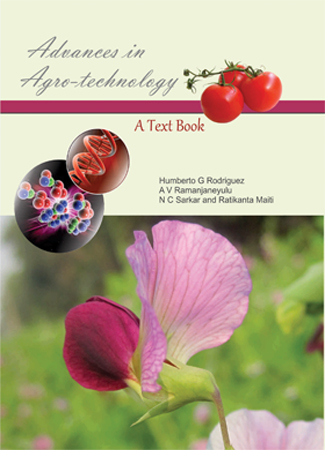
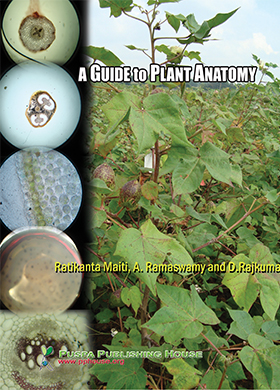
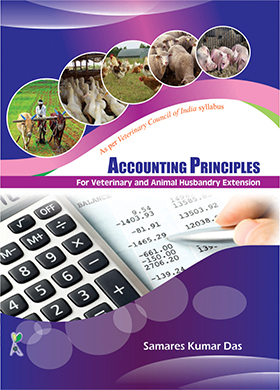
.jpg)
.jpg)


